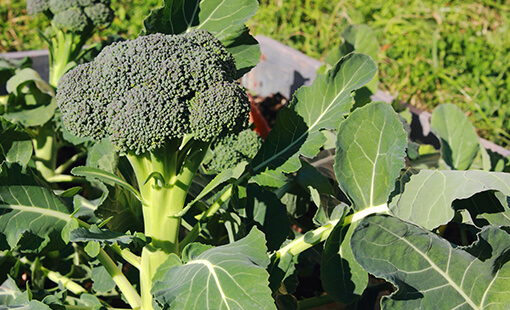
Broccoli
Delicious and nutritious. And we have added new All-America Selections winner, “Broccoli Purple Magic.” From its beautiful purple color, tight uniform heads to its great broccoli flavor, this easy to grow broccoli is also stress and heat tolerant. Broccoli contains loads of antioxidants, including vitamin C and beta-carotene and is a great source of fiber, potassium, iron and calcium. Broccoli, a member of the Brassicaceae family, thrives in cooler temperatures. This means you can have an early harvest in the spring, and if replanted, another harvest in the fall.
Light: Full Sun
Soil: Slightly acidic, moist and fertile that drains well.
Water: Water regularly, applying 1 to 1.5 inches of water per week if rain doesn’t cover it. Don’t water the heads as this can cause rot.
Temperature: Broccoli likes it cool and thrives in temperatures 65-75 degrees. If a cold snap occurs (frost temperature) when your broccoli is in the ground, cover with a “cap.” You can make these out of gallon milk or water jugs (remover the cap and bottom of the jug and put over the plant).
Fertilizer: Fertilize three weeks after transplanting with a low-nitrogen fertilizer such as a 5- 10-10 formula.
Spacing: About 18” apart. Close spacing will yield smaller heads but more secondary heads. Remember to maintain an active feeding and watering schedule.
Harvesting: Cut heads from the plant, taking at least 6 inches of stem, making a slanted cut on the stalk to allow water to slide away so that it doesn’t pool. Most varieties produce side shoots that will develop once the main one is harvested.
Replanting: Plant from transplants again in July or August for a fall crop.
Insect Challenge: Cabbage butterflies love to lay their eggs on broccoli. Prevent and control these caterpillars by using a lightweight floating row cover in the early spring and fall.
Mulch: Suffocate weeds with mulch. Mulching around plants will also keep the soil temperature down and retain moisture.

 Sue Adams
Sue Adams